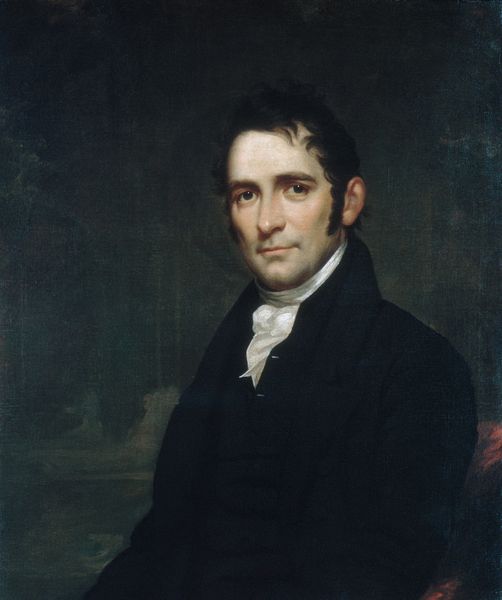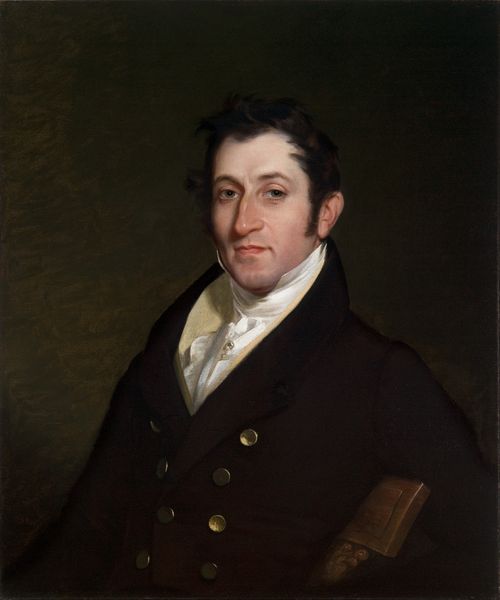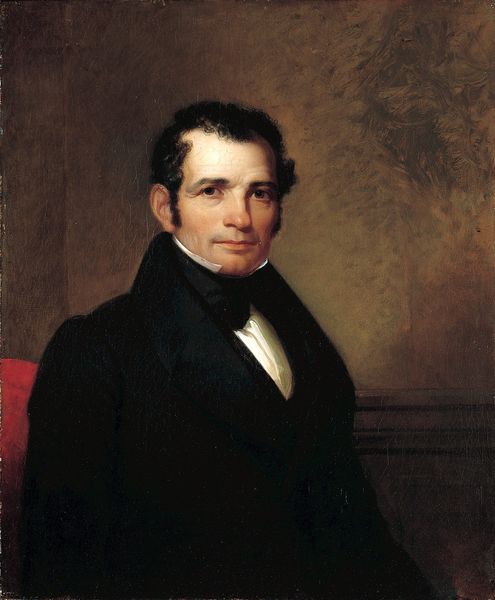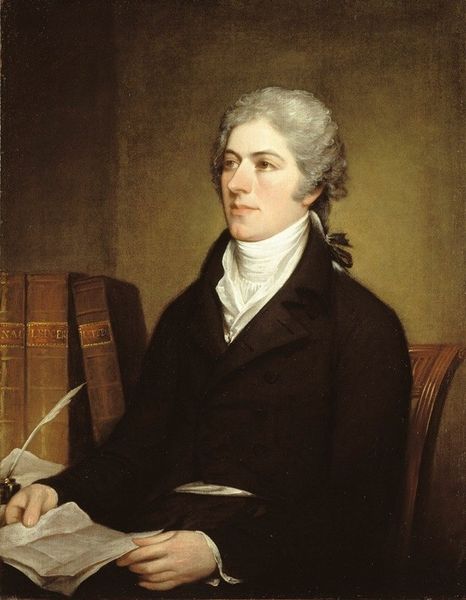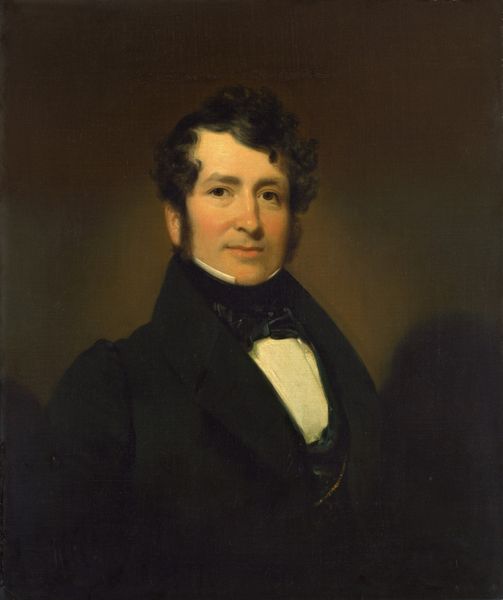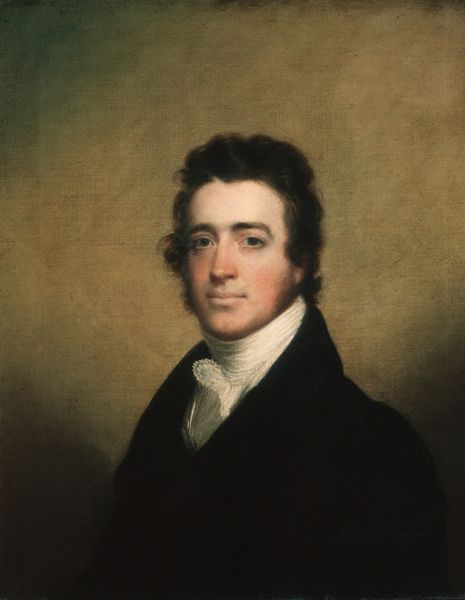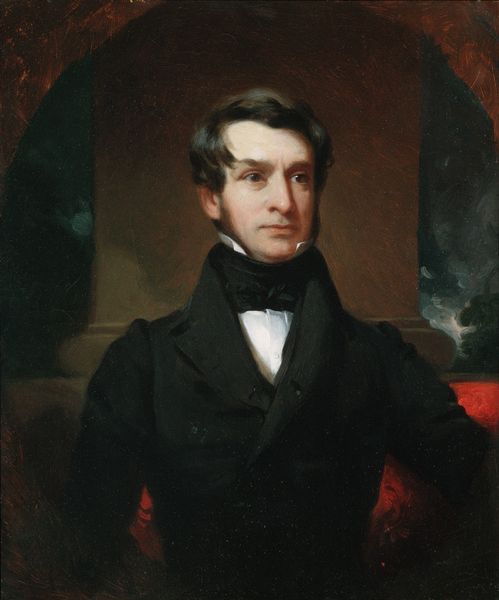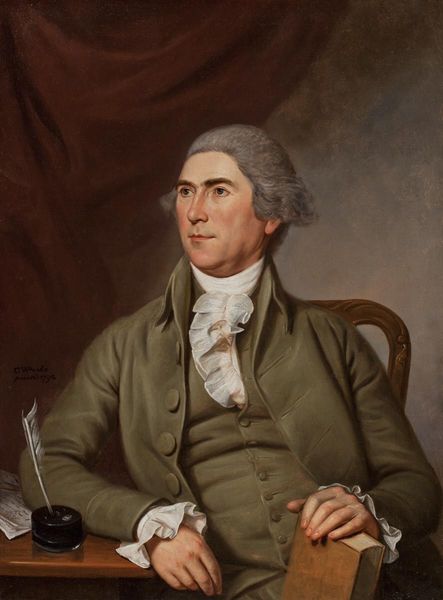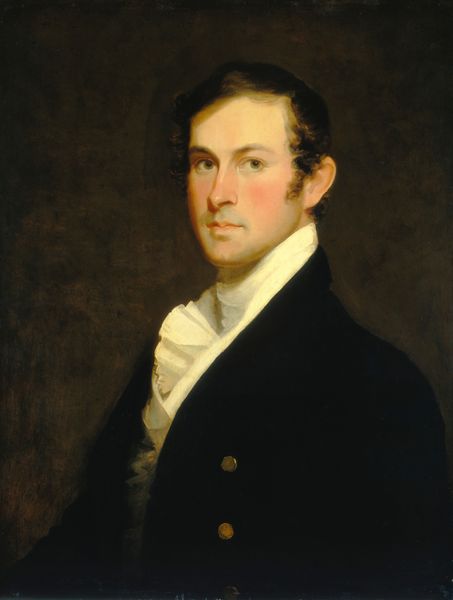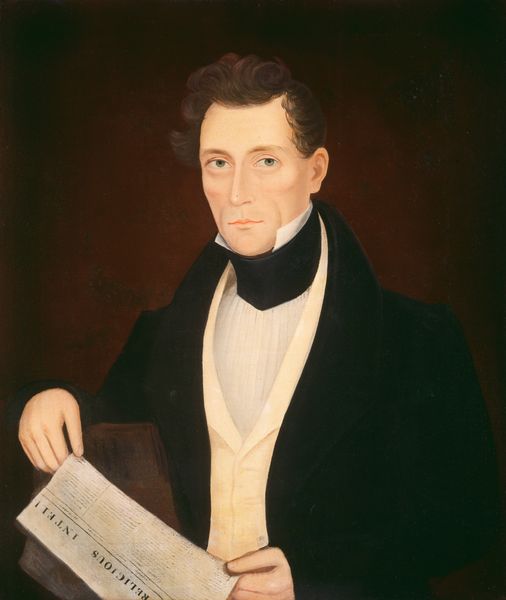
painting
#
portrait
#
figurative
#
portrait
#
painting
#
portrait subject
#
portrait reference
#
portrait head and shoulder
#
romanticism
#
portrait drawing
#
facial portrait
#
academic-art
#
portrait art
#
fine art portrait
#
celebrity portrait
#
digital portrait
Copyright: Public Domain: Artvee
Editor: This is Thomas Sully's *Portrait of James Cornell Biddle*, painted in 1841. The painting gives off a distinct air of aristocratic reserve. The book in his hand and the classical column behind him suggest education and refined taste. What deeper symbolic layers are at play here? Curator: Indeed, the symbols whisper volumes. Consider the column. It's not merely architectural; it speaks of stability, virtue, and a connection to classical ideals – concepts deeply embedded in the American psyche of the era. Notice the almost theatrical drape in the background? Does that evoke anything for you? Editor: It reminds me of stage curtains, like he’s an actor. Or maybe it symbolizes status and wealth? Curator: Precisely! It amplifies the sense of performance and carefully constructed identity so typical of portraiture. The book itself…what does that represent? It's not just a book, is it? Editor: I suppose not. Knowledge, obviously, but maybe also leisure, privilege…something he values highly. Curator: It also is a potent symbol of intellectual and moral authority, echoing the Enlightenment values that shaped the young nation. Look closer at his gaze; direct but not confrontational. What does that communicate? Editor: Confidence, certainly, but also a desire to be seen in a certain light, a curated self-presentation. It's as if he's inviting us into his world but only on his terms. Curator: Exactly. So, we've uncovered layers of identity – class, intellect, virtue – all meticulously encoded in the image. Sully doesn't simply paint a likeness; he crafts a narrative using a language of objects and gestures familiar to his audience. It is, when we think about it, an orchestrated construction of “self.” Editor: That makes so much sense! It's more than just a picture; it's a statement. Now I look at portraits so differently!
Comments
No comments
Be the first to comment and join the conversation on the ultimate creative platform.
